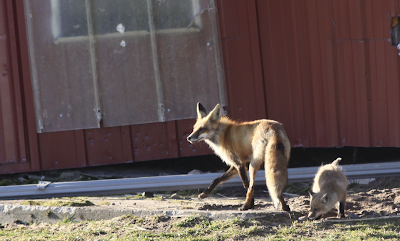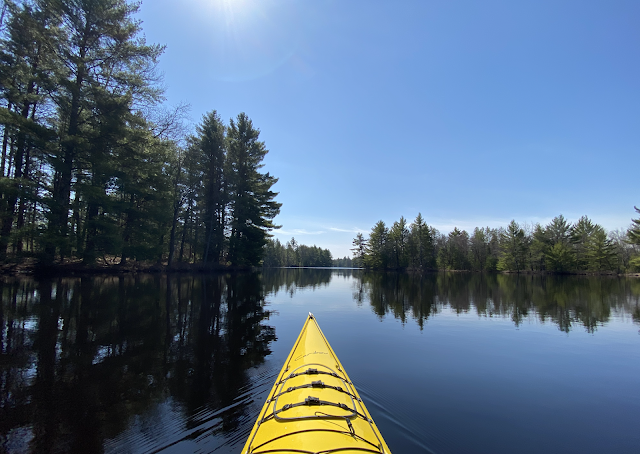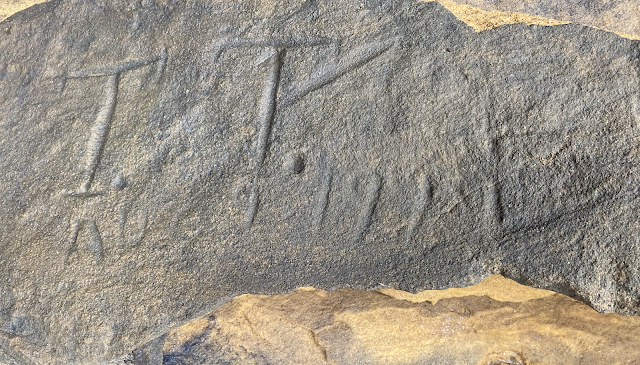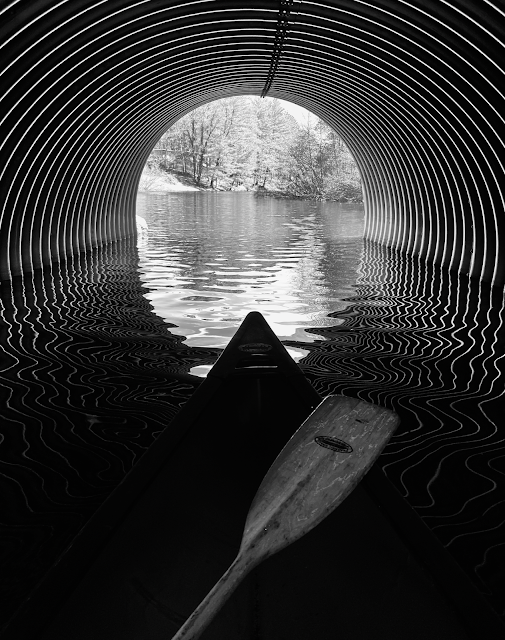I have to admit as I start typing this-I'm not sure where it's going to go, but I know I wanted to say something. I can trace the seed of this post back to a couple things recently. I was looking at some finely crafted knives by friend Greg Wohlfeil on one of his FB posts-they are well made and the shape and design I appreciated. I'd made and sold a few knives back years ago when I dabbled in blacksmithing, so his work interested me. Yesterday I ran across a carefully wrapped bundle in the bottom of some hunting supplies, a few of those very knives I'd made so long ago. Which, in turn, lead me to think about the collage professor who taught me so much more than knifemaking and art metals. Then it was then a short step down the rabbit hole to other instructors who influenced me along the way.
Which leads to the rest of this story.
I transferred to UW LaCrosse in the fall of 1979, enrolled in the "Broadfield Art" program-so I'd have a full art major, plus a full education BS by the time all was said and done. Prior to that move, I probably liked painting and drawing the most, with some exposure to sculpture (at UWMC). UWL of course had so much more to offer and I was mostly game to dive in.
The ground level of the fine arts building houses the art metal, ceramics and sculpture facilities. I recall signing up for art metals-something I had never really done, but was willing to try. This bushy mustached art professor with a quick smile, but also all business eyes set the workman like tone right off the bat. The first few projects were heavy soldering artworks-if you're going to make jewelry, you have to be an expert at soldering. After a few band rings, we set off on making a roman chain, which involves joining hundreds of tiny rings together with silver solder. The work is tedious, but in the end, you've learned a valuable skill you could do blindfolded. That's the way Bill Fiorini worked and taught and projected learning to his students.
For the 3 years I spent in his lab, I climbed up the art metals ladder, taking every course Fiorini... I mean "Bill," offered. He was a PHD, but insisted we address him by his first name. I worked hard in his room and spent every free hour back in there-it became my home base. In time, I became like an assistant doing work study for him. Silver and other metals became my passion and I loved designing and filling up sketchbooks. Bill also taught blacksmithing, so I had a chance to jump into that as well, and of course forging knife blades pushed me in a new direction.
 |
| Fiorini made Damascus steel knife |
I sustained interest in art metals after being hired in Neillsville in 1983. Back then, I taught middle school and high school art and could set up classes how I wanted. Metals wasn't offered, so within a year, we had torches, centrifuges, rolling mills and casting furnaces. NHS now could go full speed into art metals. I continued knife making on my own and stayed in contact (through postcards and letters mind you) with Bill for years. I have to admit, of all the teachers I ever had, he probably influenced me in my teaching more than any. William Fiorini passed away June 4th 2011 at the age of 69. I believe he taught at UWL for over 40 years, and thinking of him and those years, he's missed.
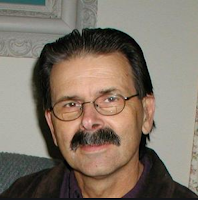 |
| Bill Fiorini |
So there is the knife to influences connection in a round about way I guess. I'd be remiss if I left it there, for as long as I'm at UWL, I should mention a couple others.
Dewayne Lesperence's sculpture lab was also on that lowest level, just down the hall from art metals. He had boom like cranes in there, plaster, welders, paper mache, plastics and just about every amazing material you could think of. Dewayne had
his sculpture students and maybe because I'd spent all my time in the medals lab I missed out. Sculpture was never really my thing-I'd taken some at "The MC" and it never really pulled at me that much. I loved his classes, but never produced anything amazing like some of the others. He was a musician as well and played in several bands in the La Crosse area. Always fun to party with (yes, we did that in those days) I can say he also shaped my art career, maybe in ways I didn't fully understand at the time. I came back and visited and again letters and post cards were traded for many years. We even exchanged works of art as gifts along the way. He retired in 1995 and died in 2011 at the age of 78 after teaching 26 years.
 |
| Dewayne Lesperance |
By my third year at UWL, I could not put it off any longer-I'd
have to take ceramics. If sculpture wasn't my favorite, then ceramics was even lower. I'd tried it in high school and nothing clicked for me. It was required for my major and I knew I'd face a lot of clay in my future, so sign me up-2 semesters to go. I don't know how it happened, but somehow I was won over. Maybe it was picking up wheel throwing quickly or the unpredictability of glazes. Or maybe it was Len Stach, the Department chair at the time and ceramics professor, who saw something in me and encouraged it. Sometimes it just takes a word or two to push a student in the right direction-something I hope I passed along to my students from him. I think also what happened was using a raw material so opposite from metal, it flipped my creativity. Jewelry making is slow and meticulous and mistakes are paid for dearly. I'd thrived in that, but now I had clay, and if I messed up, you just crunch and smash the clay back up and start over...in a matter of seconds. That was freeing. Len, of course inspired us to do just that. Soon, I'd challenge myself to make the biggest pots I could physically throw. Experiment with color combos, dive into salt glazes-you name it, I'd try it. I think I only disappointed Len once-when we were required to do handbuilding, which I detested. I made the bare minimum coil and slab pots, which were suitably ugly and during the critique I recall him almost laughing...like "What
are these Mr. Meurett?" Not my finest hour, but we put it behind us and I became the lab assistant in my final semester there. What I could have done if I's not waited for that class. Lenard Stach is 86 years old, taught for 27 years at UWL and still lives in LaCrosse.
 |
| Len Stach |
I had other instructors at UWL and enjoyed other media-printmaking, life drawing and lots of painting. The art ed classes were a bit dry and sitting for hours memorizing art slides in a darkened room maybe wasn't the most fun, but I did learn. The final influencer and most eccentric was Dale Kendrick, owner of the Behind the Brewery Gallery on 4th St LaCrosse (yes, behind the then J. Heilemans Brewery). He was a crazy man-I'd never met anyone like him. He taught me what abstract art really was, he made you feel alive and that you shouldn't be afraid to try new things. Any semblance to restraint was out the window with him. So in many ways opposite of Fiorini, but still as important for myself developing into an artist and teacher. I remember when graduating, he challenged us to always be an
"artist-teacher," so in other words, don't stop being an artist once you're out in the "real world" (of teaching). I took that to heart, and tried to continue making art as many years as possible while in the classroom. Like some of the others, we continued to stay in touch for many years and he even invited me pack to talk to some of his newer art ed students. Kendrick defiantly put his stamp on the art scene in LaCrosse until his passing on Halloween (so fitting, his favorite holiday) in 2003.
 |
| Dale and Betty Kendrick; Behind the Brewery Gallery |
I can't recall if Greg was ever a student of mine-his mom was an educator at NHS as well. It's hard to believe, but not everyone took art while I was teaching-in HS it was an elective (haha). No matter, it's because of him and a little facebook post of his current work that took me down memory lane and back into the art world. It brought back just how important people who cross our paths can be in our lives. To these past teachers, mentors, instructors, professors, confidants and influencers, thank you.







